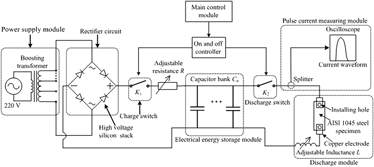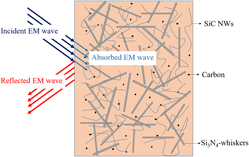Front Cover (OFC, IFC) and matter
JMR volume 32 issue 18 Cover and Front matter
-
- Published online by Cambridge University Press:
- 26 September 2017, pp. f1-f5
-
- Article
-
- You have access
- Export citation
Articles
Application of high-energy oscillating electric current pulse to relieve pulsed-laser surface irradiation induced residual stress in AISI 1045 steel
-
- Published online by Cambridge University Press:
- 03 November 2016, pp. 473-481
-
- Article
- Export citation
Back Cover (OBC, IBC) and matter
JMR volume 32 issue 23 Cover and Back matter
-
- Published online by Cambridge University Press:
- 12 December 2017, pp. b1-b5
-
- Article
-
- You have access
- Export citation
Articles
Ce3+-enriched core–shell ceria nanoparticles for silicate adsorption
-
- Published online by Cambridge University Press:
- 27 June 2017, pp. 2829-2836
-
- Article
- Export citation
Front Cover (OFC, IFC) and matter
JMR volume 32 issue 6 Cover and Front matter
-
- Published online by Cambridge University Press:
- 28 March 2017, pp. f1-f5
-
- Article
-
- You have access
- Export citation
Invited Articles
Electromagnetic interference shielding and mechanical properties of Si3N4–SiOC composites fabricated by 3D-printing combined with polymer infiltration and pyrolysis
-
- Published online by Cambridge University Press:
- 02 May 2017, pp. 3394-3401
-
- Article
- Export citation
Articles
Thermal, structural, and microstructural characterization of eutectoid steel at different heat treatments
-
- Published online by Cambridge University Press:
- 08 March 2017, pp. 2202-2209
-
- Article
- Export citation
Invited Articles
Fabrication and characterization of YSZ/Al2O3 nano-composite coatings on Inconel by electrophoretic deposition
-
- Published online by Cambridge University Press:
- 10 July 2017, pp. 3402-3408
-
- Article
- Export citation
Back Cover (OBC, IBC) and matter
JMR volume 32 issue 9 Cover and Back matter
-
- Published online by Cambridge University Press:
- 16 May 2017, pp. b1-b5
-
- Article
-
- You have access
- Export citation
JMR volume 32 issue 6 Cover and Back matter
-
- Published online by Cambridge University Press:
- 28 March 2017, pp. b1-b3
-
- Article
-
- You have access
- Export citation
JMR volume 32 issue 16 Cover and Back matter
-
- Published online by Cambridge University Press:
- 29 August 2017, pp. b1-b3
-
- Article
-
- You have access
- Export citation
Front Cover (OFC, IFC) and matter
JMR volume 32 issue 4 Cover and Front matter
-
- Published online by Cambridge University Press:
- 28 February 2017, pp. f1-f5
-
- Article
-
- You have access
- Export citation
Back Cover (OBC, IBC) and matter
JMR volume 32 issue 7 Cover and Back matter
-
- Published online by Cambridge University Press:
- 13 April 2017, pp. b1-b4
-
- Article
-
- You have access
- Export citation
JMR volume 32 issue 18 Cover and Back matter
-
- Published online by Cambridge University Press:
- 26 September 2017, pp. b1-b4
-
- Article
-
- You have access
- Export citation
JMR volume 32 issue 1 Cover and Back matter
-
- Published online by Cambridge University Press:
- 12 January 2017, pp. b1-b3
-
- Article
-
- You have access
- Export citation
Front Cover (OFC, IFC) and matter
JMR volume 32 issue 3 Cover and Front matter
-
- Published online by Cambridge University Press:
- 14 February 2017, pp. f1-f5
-
- Article
-
- You have access
- Export citation
Back Cover (OBC, IBC) and matter
JMR volume 32 issue 8 Cover and Back matter
-
- Published online by Cambridge University Press:
- 28 April 2017, pp. b1-b2
-
- Article
-
- You have access
- Export citation
Articles
Dispersion of antimony doped tin oxide nanopowders for preparing transparent thermal insulation water-based coatings
-
- Published online by Cambridge University Press:
- 13 June 2017, pp. 2414-2422
-
- Article
- Export citation
Electric field effect on chemical and phase equilibria in nano-TiB2–TiO2–TiBO3 system at <650 °C: an in situ time-resolved energy dispersive x-ray diffraction study with an ultrahigh energy synchrotron probe
-
- Published online by Cambridge University Press:
- 19 December 2016, pp. 482-494
-
- Article
- Export citation
Front Cover (OFC, IFC) and matter
JMR volume 32 issue 14 Cover and Front matter
-
- Published online by Cambridge University Press:
- 27 July 2017, pp. f1-f5
-
- Article
-
- You have access
- Export citation







